Meeting Alan Cathcart at the annual Team Obsolete Christmas Party was a thrill. He’s had quite a career. We have a few mutual friends and that opened the door for easy conversation. It didn’t hurt that I wore my FB Mondial jacket, as Alan famously owned an ex-Mike Hailwood 250 Mondial, that he eventually sold to buy a Ducati Supermono…as one does. The following is an edited transcript of my chat with Alan Cathcart on December 9, 2023:

Alan Cathcart (AC): I’m a reader who decided that I’d go out and try and find the bikes that I’ve read about, and write about them. I’m very fortunate to be somebody who made his hobby his livelihood. It began while I was in the travel business. I was a partner in a wholesale group travel company and traveled a lot in the USA. Because of that I was able to dig up some pretty interesting motorcycles and take them back to Britain. I started racing in Britain in the mid 70s thanks to an American friend of mine, Jeff Craig. Jeff had come over to England with a tour group from his school and he’d come to get parts for his 1937 MG TA. When I rolled up at the at his hotel to supervise their half-day tour of London, he saw my bright red MGA and decided we were bosom pals – and that I’d be able to him get parts for his TA. I did and we became very good friends. He then decided, having graduated, to come to England and learn how to race motorcycles that turned right as well as left. He was a flat tracker! We shared an apartment in central London and started racing. In fact, I was racing cars back then and just the thought of going into Paddock Hill bend at Brands Hatch on motorcycle filled me with dread.
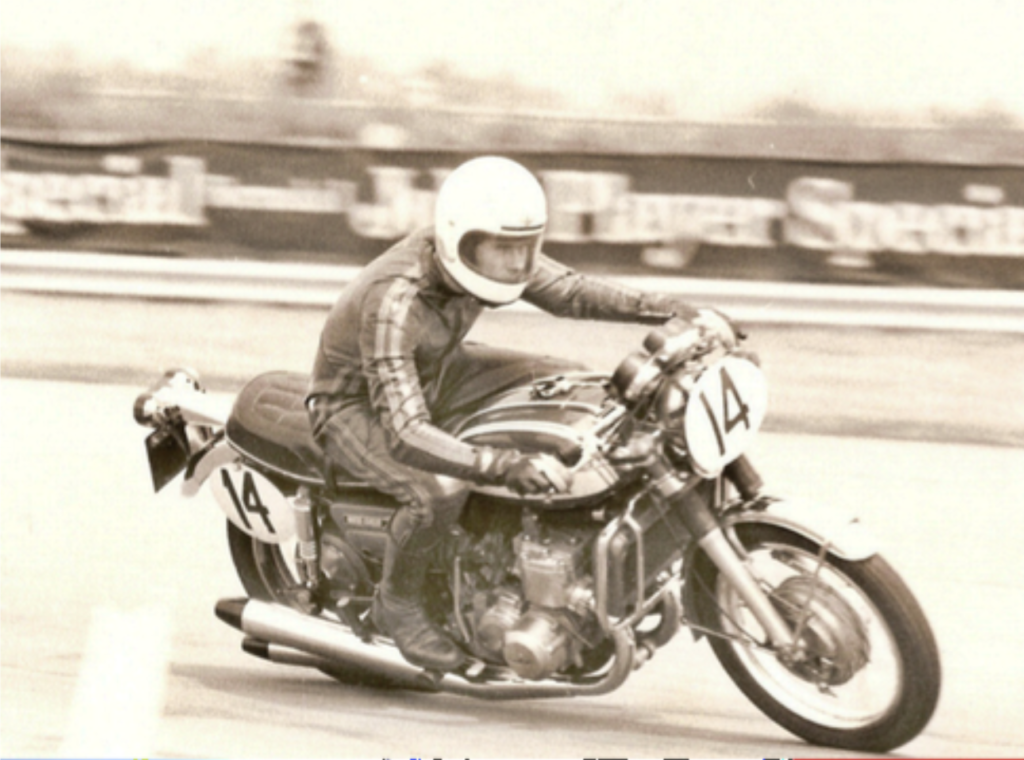
Classic Bike did an article about all the British Formula 750 BSAs and Triumphs with Rob North frames and 3-cylinder engines, but they missed mine because I’d found it in Houston TX. I wrote in to say they’d forgotten about mine, and by the way, why didn’t they include some racer tests in the magazine like they did in Classic Sports Car with Willie Green? Editor Mike Nicks said that’s a great idea: we’ll mention your BSA in the next issue, and why don’t you do the racer tests? Me? Look at a page of blank paper in a typewriter? He eventually convinced me, and the first article I ever did was about my G50 Matchless. I tested a couple of bikes from my own collection and the readers response was great – ‘Would you like to ride my bike?’ And that’s how it all took off.

AC: Yep, Spa Francorchamps in Belgium when it’s dry. Unfortunately, Ardennes weather means you frequently get all four seasons in one day, but I’ve always liked big circuits. I like Monza as well because you can gain seconds in fast corners not only by being brave but also by making sure you get your lines right – Spa rewards that in spades. It’s a great, great circuit.

AC: My girl Trixie is sitting in my garage and looks at me every time I open the door. This was a lovely story because it came about when Yamaha produced this bike for the Japanese enthusiast. The idea was you get a base model sports bike using their existing Super Tenere engine designed for African races and they produced a used to sports bike. They had no idea it was going to be successful in Europe, so before taking decision to order it, Lin Jarvis, today the Moto GP head of racing had the idea , let’s see if we can find a journalist who would like to race it in the few Pro Twins races to see what the public thinks of it. So he asked me and I said yes! So he commissions Over Racing, which is the back door of the Yamaha race shop, an independent tuning shop in the same way that Morawaki is the back door of Honda and Yoshimura is the back door for Suzuki. Over Racing produced Trixie and I won my first race on it in the pouring rain at Assen by 20 seconds and had a huge amount of success with the bike that was a beautiful, beautiful ride and still is today. I’m glad to say that Yamaha Europe thought it was so successful they imported it for the second year. It became a cult motorcycle.
JL: And you took Trixie to Daytona?
AC: Well, my reward for winning so many races on it the first year was that Yamaha Europe paid to take it to Daytona. Nobody had seen one before, because the TRX was never imported to America. Yamaha USA bet all their bucks on a V4 cruiser, which was a bomb. I won the Battle of the Twins race at Daytona, coming from the back of the grid because I didn’t have any races the year before. I beat all the Ducati Superbikes. Nobody quite knew what this thing was: I remember Richard Chambers, the announcer, grabbing me as I came into victory lane and saying, “Alan Cathcart, how the hell did you guys make this motorcycle out of a dirt bike?” I didn’t do it, Over Racing did.

AC: I’m very fortunate that factory race teams allow me to track test their designs, one year after another: that means I went fast enough to demonstrate I knew what I was doing, could evaluate the bike properly, and never tried to show them I ought to be racing the bike next week, instead of their current rider. Secondly, my articles were very long. I was sorry for my editors, but it’s my duty to report everything that anyone would ever want to know about that particular bike. The engineers really did appreciate it: I told their stories, even if it was a bad season. Full marks to Honda, they let me ride bikes even when they were fundamentally flawed. That was the key to being allowed to test these bikes. In the case of Superbikes, the time came that I could not register a qualifying lap time, so I stopped racer tests in 2015.
JL: And in 2009 you were awarded Journalist of the Year by the Guild of Motoring Writers based on your evaluating ten of the best GP bikes and World Super Bike racers. This was the era of Valentino Rossi, Jorge Lorenzo, Danny Pedrosa and Casey Stoner. How did you convince the factory teams to allow you to test them that season?
AC: Well, it got to the point that I didn’t have to ask, they would come to me to ride the bikes. “Are you free to come to Suzuka on such and such a date?” I have, dare I say, proven my bona fides and my capabilities by the articles that I’ve done.

AC: That was Eddie Lawson’s 1989 500cc World Championship winning NSR 500 Honda V4. Eddie was the first person ever to cross from one Japanese manufacturer to another with the number one, in 1989, having won it on a Yamaha in 1988. I had watched the evolution of that bike, so I had my annual invitation to come to Suzuka in October at the end of the season to ride the bike. In those days we didn’t have tire warmers so we had to do a slow lap, gradually speeding up before giving it the berries on lap two. I came out of the chicane at Suzuka before the finish line and it’s a long, long third gear right-hander past the pits. I got on the throttle hard and the bike tried to kill me. It got into a massive tank-slapper and by great, good fortune I stayed on. I can’t say it was anything I did. I was sure that something had broken so I toured ‘round slowly and came back to the pits. As I came down pit lane from mechanics were all bowing very, very low which Japanese way of saying “I’m sorry, I apologize”. So I stopped and I said “you saw what happened”. “Alan san, we are very sorry, we forgot to tighten the steering damper that on removing it from the truck. Okay, so my fault. I should have checked. They tightened it up and then, okay now I said, “I can’t steer it, the steering is solid, I said. “Yes”, they said. If I have a slide I can’t correct it. “Eddie san always ride like this”. Oh, so I went out and I can’t claim this was a proper test, this was showbiz. I was getting some photos, getting experience of what the engine and chassis wasn’t really… I’m trying to find a polite word, ready? Obviously, Honda knew this. So I wrote the article and I explained what happened. By the way, it was always a condition of my tests that the manufacturer would strip the bike for photos and let us take pictures of what it was like behind the fairing, with the fuel tank off. That’s when I saw what I really noted in the Grand Prix’s how the the welding around the steering head on the Honda was so built up, about three or four different levels of metal level. Anyway, I wrote the article and remember seeing Eddie at the Bologna show at the Super Moto race sitting on the back of this Transit van and I walked towards him. Every step I got closer we got another 10mm of Eddie Lawson’s smile. As I came up, he said “I hear you rode my bike”. I said yes, it tried to kill me. “Join the club”, Eddie said. So, next year I get my annual invitation the article is published all in the world. My invitation comes from the Head of HRC. He said, “Alan san, first can we meet at the railway station restaurant in Tokyo before you come out to Suzuka?” Went to a nice Italian restaurant, had a very nice lunch and chat and then the coffee arrived. Two hands on the on the table and Alan san, I must tell you that this year we had some difficulty to convince Honda public relations staff you should be allowed to test our bike. I said, Oh what, last year’s test of the Eddie Lawson bike? He said, “Exactly. And I told them Alan Cathcart always writes the truth, he will test our bike again this year because he always writes the truth, and by the way it was not a good motorcycle.” That was a nice vote of confidence.

AC: Well, Ducati has been working at it and it’s exactly 20 years. Funny, I’ve just republished my article on the 2003 Ducati Desmosedici GP3. That was their first attempt at going Moto GP racing with an electronics light, doubled-up Superbike: That was essentially what it was obviously scaled down in plastic. But I’d liked to be a fly on the ceiling of a Honda Board room at the end of the first lap of the first race last year and Suzuka. When Loris Capaossi came round in the lead at the end of the first lap on the Ducati. The very first lap of its entire Moto GP career. And the 2nd, and the 3rd, and the 4th, and the 5th, with all the title winning Honda RC211 V5 cylinders behind it including Valentino Rossi’s. Eventually, the lay got passed but Loris still finished third and he won the sixth race at Catalonia. Finished third in the championship his teammate Troy Baylis fourth. That was the beginning of a process that has followed that management and since 2010 with their owners Audi/VW. They have kept faith with the whole project. They did have the success of Casey Stoner in 2007, the first year of the Honda-inspired 800cc formula but no it’s not the same as dominating the grid and the results as we’ve done this year.
JL: They came to learn Valentino Rossi desperately wanted a seat on what he thought was the secret weapon of Casey Stoner, but it wasn’t the Ducati, it was Casey Stoner. It’s different this time.
AC: It’s different now because there were seven different winners on Ducati’s this year and that shows what a great bike it is. Come on, well done Ducati! Now it’s up to the others to try and match them.

AC: That’s a tough one. I suppose to a certain extent it depends on the bike specification. Is the specification or interesting? Is it unusual? To what extent do I need to explain that to the reader? Every bike has its own hook, its own reason to be written about and it’s just up to me to try and get that over to the reader in the first paragraph; that’s the most difficult part of every story. Write that first paragraph and hopefully I’ve hooked you and you want to read the rest of it.
JL: So you’ve seen motorcycle journalism evolve over the years. What are the notable changes or trends you find most significant and how would you define your style of journalism?
AC: Mine’s an old style of journalism because I write lengthy articles. That is the single biggest difference between now and 40 years ago when I started. Reader retention, the reader somehow or other doesn’t have, allegedly, have the attention span they had 40 years back. They want shorter articles which is strange in a way because print is increasingly being replaced by online, by digital there’s no space limitations on digital. I still write long because it’s up to me to tell you, the reader everything you could possibly want to know about that particular motorcycle.

AC: I believe that there will be coexistence. The aim is net zero. Okay, it’s a very valid aim. But we have to think about how this electricity is produced. Electric vehicles are zero emission at the point of use. Frequently it has been a huge amount of carbon created by the manufacture of the current, particularly in countries like China and India which seem to be building a coal-fired power station every week. Great if it’s nuclear, but nuclear has its own risks. In any case, the European Union which at the moment is one of the key drivers of product development on two wheels. The European Union under pressure from the European motor car industry has modified dictate there should be no new ICE internal combustion engine vehicles sold and registered in the European Union after 2035. From now on it will be either be zero emissions at the point of use or else there will be ICE vehicles permitted so long as they’re powered by digital fuel, E- fuel. So fuel is not manufactured by fossils components. I believe that there will be a coexistence in the future between the two types of products. Electric vehicles will become cheaper to manufacture than IC ones simply by the economies of scale. But at the point that’s company like BMW Motorrad, BMW motorcycles the largest prestige manufacturer in the world of two wheels, they have stated that they will continue to make IC models after 2035 which will be obviously powered by digital fuel. It does give the consumer a choice. This particularly will apply for certain kinds of model which they have stated through an interview I did with the recently retired CEO Marcus Schramm. He stated that we believe that there are certain applications for motorcycles which can never be electric powered and a good example of that is adventure touring. Well since that represents the biggest single model segment at moment in mature markets that’s a pretty important statement. So we’ll still be able to buy an Africa Twin we hope or BMW R 1300GS by 2035. That’s a very rational policy.
JL: So you feel that the market is still going to be receptive to it as long as there is some offset of the carbon footprint?
AC: At the end of the day what matters is the carbon footprint. If you take into account the ingredients represented by the manufacture of the fuel, whether it’s electric fuel or whether it’s liquid combustion fuel that’s still the most important end result. People who ride bikes tend to be quite conservative and oh, it doesn’t make a nice noise, so I don’t want it. Well, I can tell you there are some electric motorcycles which are thrilling to ride simply because of their sound quite apart from this the fabulous acceleration you get. The best example I can give is the MotoCzysz which won the Isle of Man Zero TT Electric race four years in a row and beat Honda, otherwise known as Mugen each time. The MotoCzysz, which I was fortunate to ride at Portland Raceway screamed at you because it had direct, straight cut primary gears. And it was a thrill to ride! It handled really well and MotoCzysz really knew chassis and suspension design so well.

AC: We own a house in Western Australia and so we go there each year, my wife Stella and I for three months in January – March to escape the British winter which is not necessarily cold but it’s so true we get a lot of dull wet days. While I’m in Australia there’s a huge number of exciting and interesting bikes built out there, like the Drysdale V8 to the Motoinno TS2 Triumph Moto 2 bike. I’ll go and ride those and write about them. I’ll come back to Europe as a rule for the Goodwood members meeting on April the 15th weekend when I’ll be marking the 50th anniversary of my green frame Ducati 750SS by racing it in the formula 750 race. We’ll give her a nice birthday party. I’ve just published the second of my two books about Ducati Superbikes 1988- 2019. The same publisher in Italy has asked me to produce a book on a very famous American. His name is ‘Doctor John’, the story of the John Wittner Moto Guzzi V-Twins and his rider, Doug Brauneck. Lastly, I’d like to say out there to readers thank you for all your support down the years and please just keep on reading my work, I hope you enjoy reading them as much as I enjoy writing them.
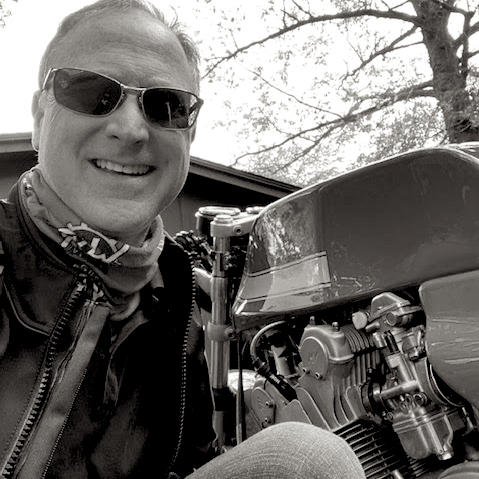

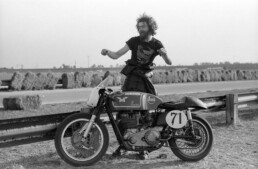
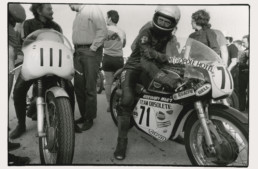
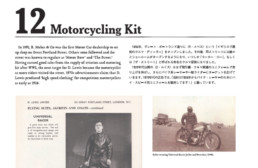
Gotta be honest here ( oh dear … I can just see the snowflakes running for cover under their keyboards so they can pretend to be brave … honestly …. oh dear … a genuine opinion … the worlds coming to an end )
Never been a fan of AC . Never been impressed by his journalism ( fact is … I plain just do not like it ) … never been impressed by his racing ‘ accomplishments … never held to much of any of his opinions … etc .. et al … ad nauseam
Fact is … in a sea of truly great M/C & automotive ( fame exceeding his abilities ) journalists … well … Alan may be a bit of legend to some … but to many others who’ve seen first hand what truly great journalism looks like ( LJKS being among the very best there ever was ) … not to mention a virtual universe to truly great racers …. well
In my never ever humble and ( bleep ) you if you don’t like it opinion …. Cathcart’s got the name recognition ( among a very few ) but to put it in musical terms …. he aint got the chops to back it up
So Lawless… bring on some more prose … and leave the historical wanna be’s under the dust pile where they belong
So there ya has it …. a gut punch level opinion .. thrown full force .. and to ( bleep ) with those who done’t like it
Recommendation ? .. If’n ya don’t likes it …. don’t read it !
That’s quite the career. I love motorcycles and motorcycling history. Like music, different writers intrigue different folks. His history is amazing, and while I love to read (even long articles) I’ve not once ever thought any of it was important. It’s just boys playing. So writing about boys playing, is simply entertainment. That being said, each of us must do what we are drawn to.
I believe motorcycling is about to have its most substantial contribution to society in the next couple of decades.
Depending on your definition of a motorcycle, I see these new lightweight two or three wheeled vehicles propelling us into the future with an economical and green alternative to what we use for transportation now. Truly affordable, very versatile and nimble sources of getting us where we need to go without two tons of metal wrapped around us.
A new day of transportation that will shock the car market. Propel smaller vehicles to the forefront, and keep us rolling. That will be an important role for the motorcycle manufacturing community. Whatever the final term is named, and I doubt it will be motorcycle, it’s now time for the experts in the small wheels business to recognize the handwriting on the wall. We will need transportation that rolls, but for the most part, it won’t be automobiles. It’s time for right sizing and who better to lead, than people who understand the benefits of small light vehicles?
History is about to be made. Pay attention everyone!
It was embarrassing to read ‘GuitarSlinger’s’ cheap shot at Alan Cathcart, whose high-integrity work across multiple publications over 40-plus years speaks for itself. Kudos to John Lawless for the Cathcart interview. and to P d’O for publishing it.
Cathcart’s career speaks for itself. Thanks for your note Lindsay!
Cool interview – glad to read about the man behind the work.
The list of motorcycle enthusiast publications featuring AC’s work is almost as long as the list of motorcycle enthusiast sites that have banned GS….
PS: A book on the AMA’s Pro BOTT series would be a real treat…